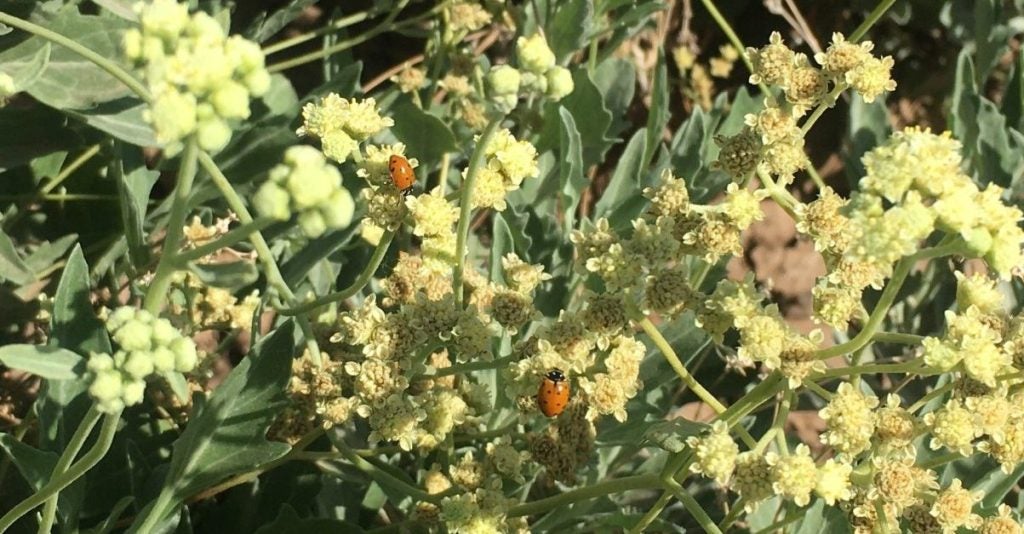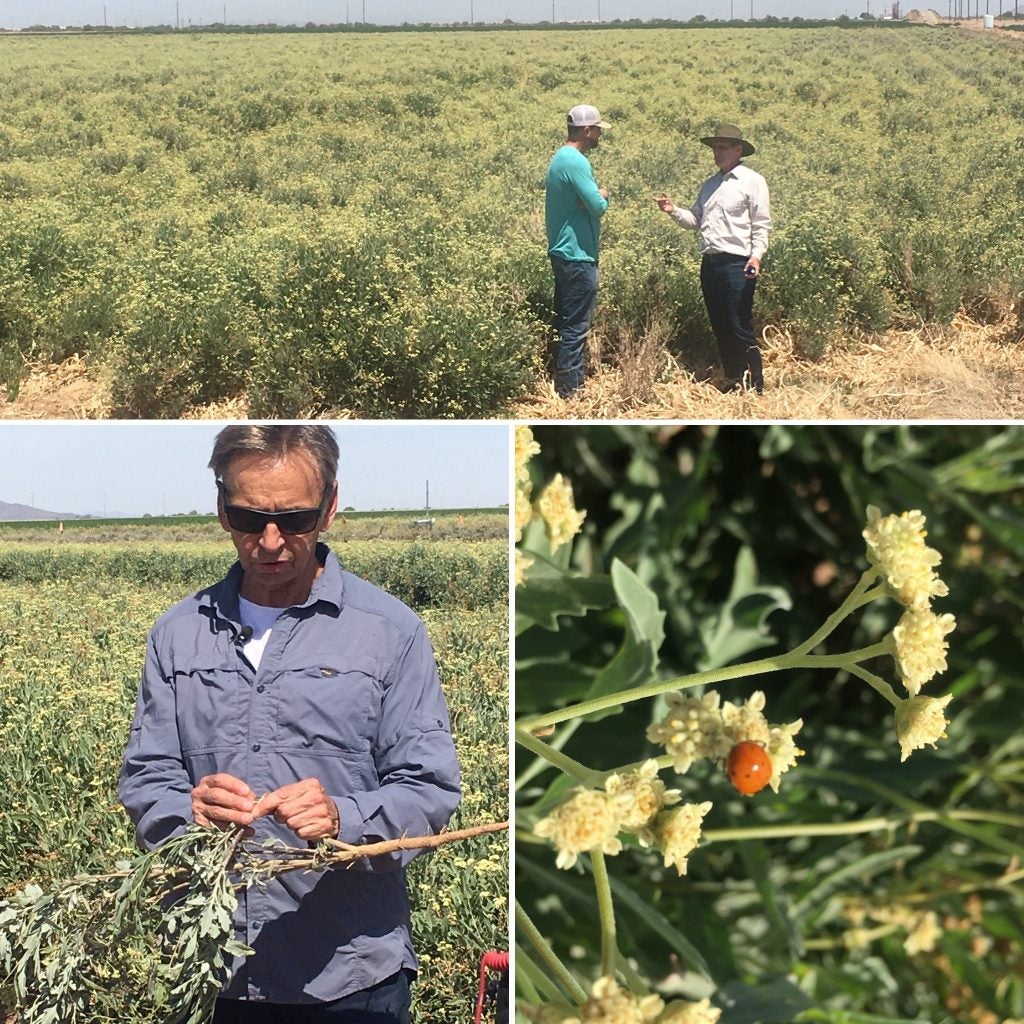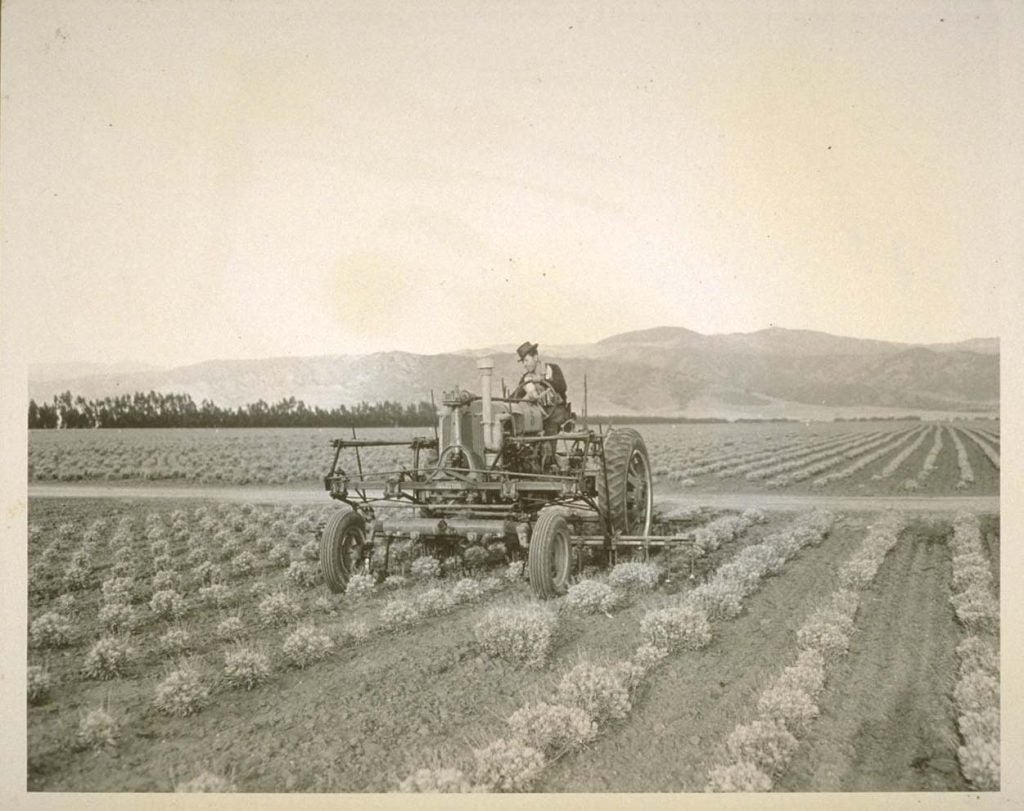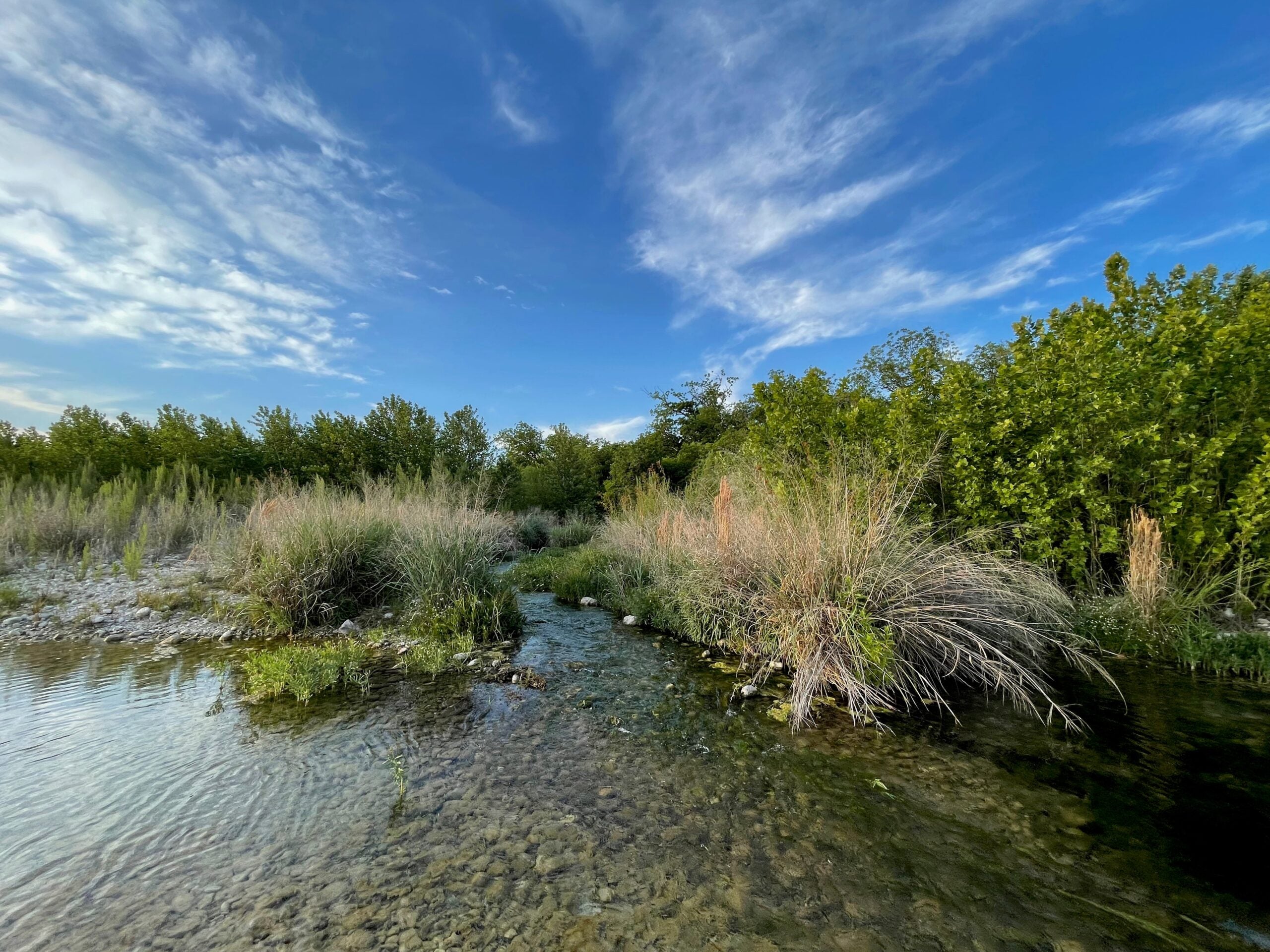Crop-switching in the megadrought: Can guayule help Arizona farmers use less water?

This year, farmers in Pinal County, Arizona, will lose two-thirds of their irrigation water from the Colorado River because of a historic shortage declaration triggered by the driest period in more than 1,000 years. And within two years, they will be completely cut off from the Colorado River.
Some farmers are responding by fallowing fields. Others are selling their land to solar companies. And then there’s Will Thelander, a farmer who partnered with EDF, Bridgestone Americas and the University of Arizona to test a new crop that uses half as much water as the alfalfa he previously grew.
Crop-switching to a desert shrub called guayule used to produce rubber is one of just many strategies that will be needed in Arizona and other regions to adapt to water scarcity and maintain agricultural economies in a new era of aridification. However, it’s not nearly as simple as just planting different seeds in the ground.
Having a big impact on water conservation, starting on 25 acres
Bridgestone, Thelander and EDF signed an agreement for the six-year guayule pilot project in 2018, but an extreme heat spike delayed planting one year. In 2019, Bridgestone helped Thelander plant guayule on 25 acres and together they gained experience in establishing the crop, irrigation needs and timing, and pest and weed management.
Thelander and Bridgestone harvested the plants from his field this month. They plan to plant 80 acres on another nearby field later this spring.
Thelander is also helping Bridgestone recruit more Arizona growers, while Bridgestone and EDF have begun outreach to tribes to explore growing guayule on their lands.
Scaled up, guayule can add up to a big impact in water conservation. Conversion of 100,000 acres to guayule in Pinal County could save 150,000 acre-feet of water per year, or 15% of the county’s current agricultural use, according to preliminary estimates.

Bridgestone will expand guayule production with multimillion-dollar, multiyear commitment
But growing the guayule in Arizona is just one step. A processing plant is also needed to turn the guayule into rubber – a substantial investment in the tens of millions of dollars.
Bridgestone has been testing guayule at research fields in Arizona since 2015 and built a demonstration-size research bio-processing facility there in 2014.
In a major signal of its commitment, Bridgestone’s global board of directors agreed in November to transition the guayule project from the research and development phase to the exploratory business phase, which means building a larger plant capable of processing up to 20,000 acres of guayule from up to 75 miles away. That plant is expected to open in 2027.
To help scale up, Bridgestone is applying for a Department of Agriculture Climate Smart grant that would also incorporate water monitoring with OpenET, another project led by EDF, NASA and Desert Research Institute.
Bridgestone’s motivation is supply chain diversification, across geographies and plant biologies. Many people don’t realize natural rubber comes from a tree in southeast Asia, notes Dave Dierig, Bridgestone’s manager for agro operations, who studied guayule for his PhD.
How Dwight D. Eisenhower supported guayule expansion
While attempts to grow guayule have faltered over the years, there is a precedent for successful large-scale production in the region.
In fact, the U.S. government led the largest guayule production effort ever during World War II. EDF calls the guayule pilot “Project Ike” because President Dwight D. Eisenhower, as a U.S. Army major, supported a plan to grow guayule in California if the United States was cut off from Asian rubber, which happened during the war.

Today, Bridgestone is testing guayule again in California’s San Joaquin and Salinas valleys, as well as in New Mexico, Italy and Argentina. Plans are also in the works for Mexico, where guayule is a native shrub.
A resilient crop for a drier future
When guayule was first grown in the western U.S. more than a half-century ago, the crisis was a world war. Today the crisis is climate change.
Dry, water-stressed agricultural regions like Pinal County are at risk, and some farmers are already giving up. Will Thelander has recognized new solutions are needed to ensure future generations can continue to farm in the region. Switching to lower water use crops like guayule can be one of the many strategies farmers adopt to remain sustainable amid a drier future.











